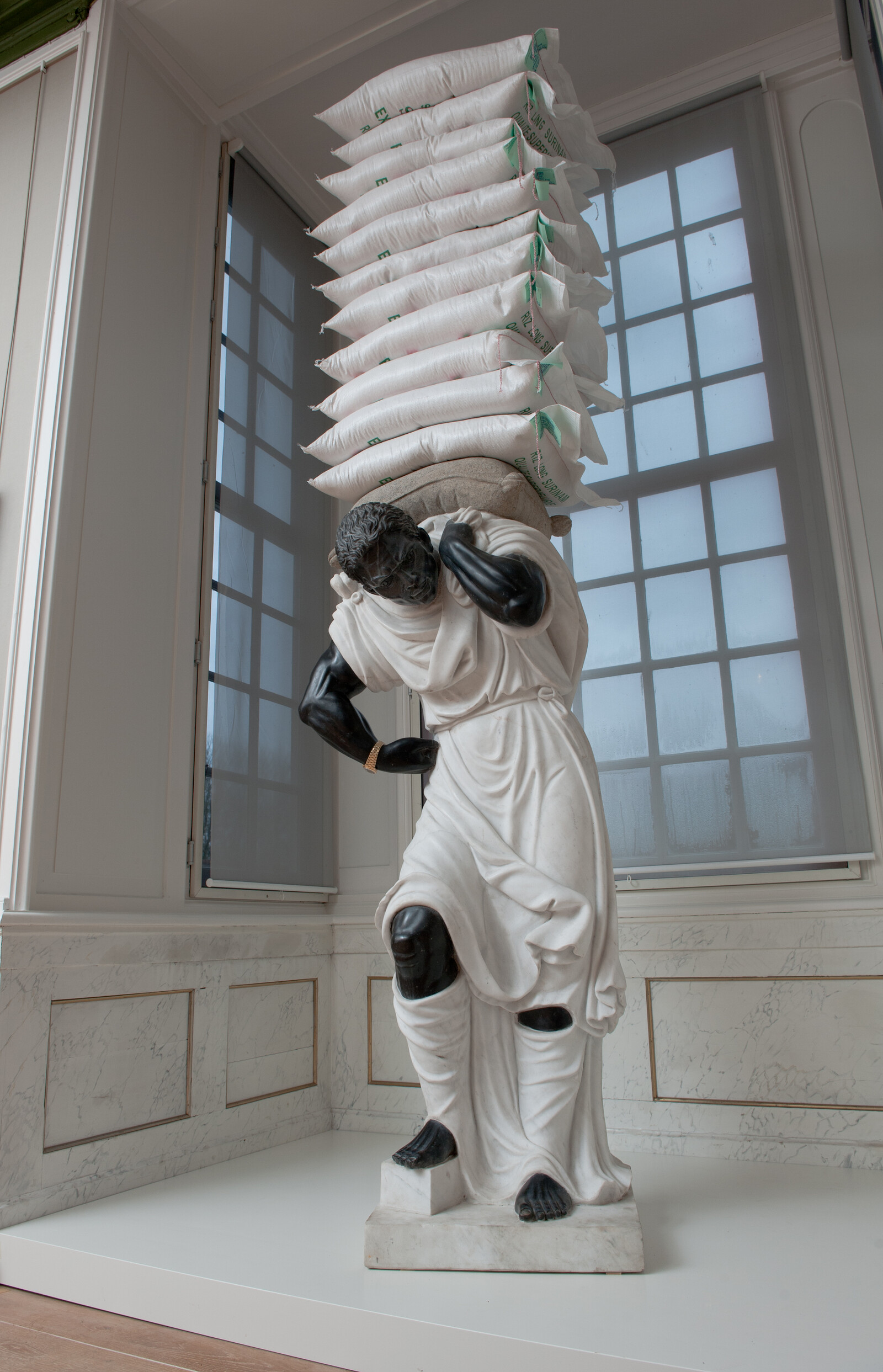a posteriori
January 23–April 17, 2016
Het Nijenhuis 10
8131 RD Wijhe
Netherlands
Against the historical backdrop of Kasteel het Nijenhuis, home of artworks collected by Dirk Hannema (1896–1984), a posteriori deals with the friction between current and historical conditions as they impact our understanding of art. “Hannema is the most controversial museum director in Dutch art history because of his critical eye and his absolute authority on the art market, which did not prevent his false attributions to great masters—among which the forged Vermeer The Emmaus was the most notorious case—as well as his role in Word War II as Dutch National Socialist (NSB) representative for Museums,” Hans van Houwelingen stated. He created 17 artworks that interfere with and reflect on Hannema’s collection, that are either signed by him or that appear as cases of suspended authorship or ownership. By attributing some works to Dirk Hannema, the artist becomes wilfully embroiled in the moral controversy he instigates. “I choose to enter the incorrectness of this moral tombola.” These works and the art-historical or curatorial operations they embody realign the collection in an intriguing configuration of timelines and historical misalliances. Hannema figures as a hinge to articulate a distinction between the “dry” museological object and the fluid markers of morality that constellate around it at each historical juncture. Each epoch “leaves a moist trail of moralism” on the art object it inspects, resulting from shifts in the ethical paradigms that frame the understanding of art over time. a posteriori is a hybrid of fiction and investigation, of values and verdicts, time and politics—referents in an allegory of art’s positives and negatives, of what art represents and what it permits, of the spaces it opens to either imagination or power.
Van Houwelingen’s conceptualization of value is a ruse where scales are purposefully tipped, and criteria of validation rigged. His concept crystallizes most clearly in his exhibition’s centerpiece: The Art of Value. This work is wrongly and eloquently attributed to Hannema, subversively commenting on his attributions as a curator, on the political circumstances of his practice. To history’s already charged findings about Hannema, Van Houwelingen adds another accusation: a counter-monument to slavery, sufficiently ambivalent to both emit a pungent whiff of racism, as well as to update the historical record with a reflection on the post-colonial heritage. The sculpture is a replica of one of the four Moors propping up the funeral monument for the Doge Pesaro, at the Basilica dei Frari in Venice. These Atlases not only sustain the architectural edifice within which the Doge’s apotheosis unfolds, but each also carries a heavy bag on the shoulder. They sustain two distinct weights, operate within two distinct regimes of value. Van Houwelingen pursues this thread by a comparable two-fold manoeuvre: his replica Atlas is “prettied”—and lifted onto another plane of material worth—with a real gold Rolex watch, and burdened with an impossible stack of bags of Surinamese rice—a “multiple” of the world’s cheapest food staple. Uncomfortably propped atop the marble piece, these “original” bags make visible an economy that perpetuates colonial relations, forms of production and consumption that encode new, fuzzier modalities of slavery. The Atlas becomes protagonist in Van Houwelingen’s unsettled narrative about real and abstract subjugation, real and abstract emancipation—a material equivalent for a set of values that oscillate between the worthless and the priceless.
As opposed to a chart of neatly ordered historical facts, Van Houwelingen bends timelines until they meet, or loop, to form something like a three-dimensional object, whose facets—time, place, value—are inseparable from one another. The Art of Value is a clear manifestation of the project’s preoccupation with the notion of “historical supplement”: the unwarranted, unnecessary “what if” that insinuates itself in the story to muddy it, and to complicate the question of a moral vantage point from where we would unify, and reconcile, the story’s many ethical underpinnings. Van Houwelingen’s strategy of historiographic speculation sculpts and shapes at the edges of the plausible and the imaginable.
More on Hans van Houwelingen’s website

